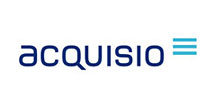 Late last week, Acquisio announced that it was integrating DART into its paid search platform Though DART is used for paid search, display advertising may be a logical next step for a platform such as Acquisio’s. Read the release.
Late last week, Acquisio announced that it was integrating DART into its paid search platform Though DART is used for paid search, display advertising may be a logical next step for a platform such as Acquisio’s. Read the release.
Martin Le Sauteur, CEO of Acquisio, discussed the implications of the DART integration.
AdExchanger.com: Why integrate DART into your search platform?
MLS: Acquisio’s clients are agencies and all agencies live in a world where each new client brings its own set of tracking systems. That’s why agencies can’t afford to be dedicated to just one tracking solution. When it comes to analytics, for example, most agencies have a mix of clients who use Google Analytics, Omniture Site Catalyst, WebTrends or Coremetrics.
When it comes to third party ad servers, the same is true, and their clients will use a mix of them. In this area, DoubleClick DFA is the gold standard. Most of our clients currently use DART to track results from display advertising, but many also use DART to track paid search results. This meant they had to use DART to traffick all their keywords, and each time a change was required, they had to go back to DART, get the trafficking sheet and push it into Acquisio. It was just extremely time consuming and agencies were concerned about losing historical data and having to re-tag all of their clients’ websites.
Integrating DoubleClick and Acquisio therefore made sense and dozens of our clients were asking for the integration. Now, agencies can leverage the power of their DART tracking data within the Acquisio SEARCH application, eliminating the need to transfer files, manually encode URLs, or sync data.
As we like to say, our customers drive our road map, and this has been in the works for some time now. We’re glad it’s finally available.
How is Acquisio approaching effective cross-channel attribution? Is it all about the click, for example?
Today, we’re a platform to manage paid search campaigns, which means we only track clicks. However we are developing applications and partnerships beyond paid search. Online marketing is changing, and search is no longer the only effective method to get leads. Display advertising and social advertising are both key elements of the performance media mix, and we will be expanding our offering beyond paid search and into display and social ads in the near future. This means we’ll be in a position to support campaign management and reporting based on much more than just clicks, but also using metrics specific to these channels, such as exposure to ads and more. Third party ad servers are the key to all this, and we’re going to continue to connect with the industry’s leading solutions to offer our clients the flexibility they need to most effectively serve their clients.
As far as attribution goes, we plan to let our clients choose between the model their ad server provides, or to override it and score the importance of various events like clicks and ad views according to their view of their relative importance. We’ll see in time if designing cross-channel attribution algorithms could help, but to be honest at the moment we just don’t know if that’s the case. I don’t think anyone truly does either.
Can you share some milestones you’d like to see with your platform a year from now given the DART integration?
We’re excited about getting into display and social advertising, so we expect to have made some significant progress within the next 12 months. Ultimately, the idea is to release a new platform that helps our clients buy and manage ads across all these channels in a seamless manner, and to bring them all the tools they need to automate and optimize the bidding process, the platform to deliver cross-channel client reporting, and the rest of the tools agencies need to excel at performance marketing. This means developing API connections to the dominant ad exchanges and networks, as well as to Facebook ads, and who knows, maybe even “Twitter Ads” or whatever they end up releasing. We’ll integrate these based on client demand and on availability.












